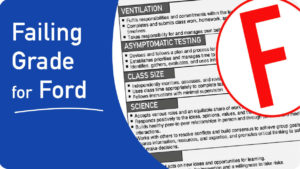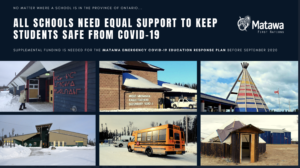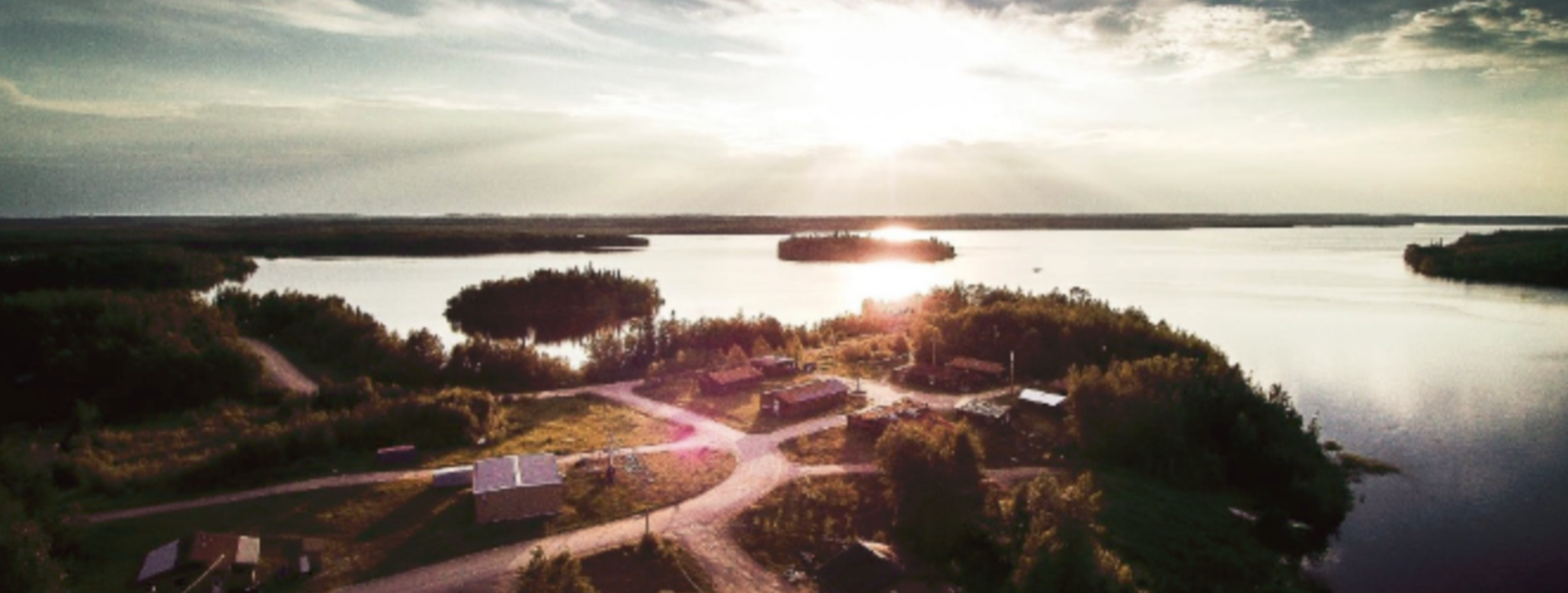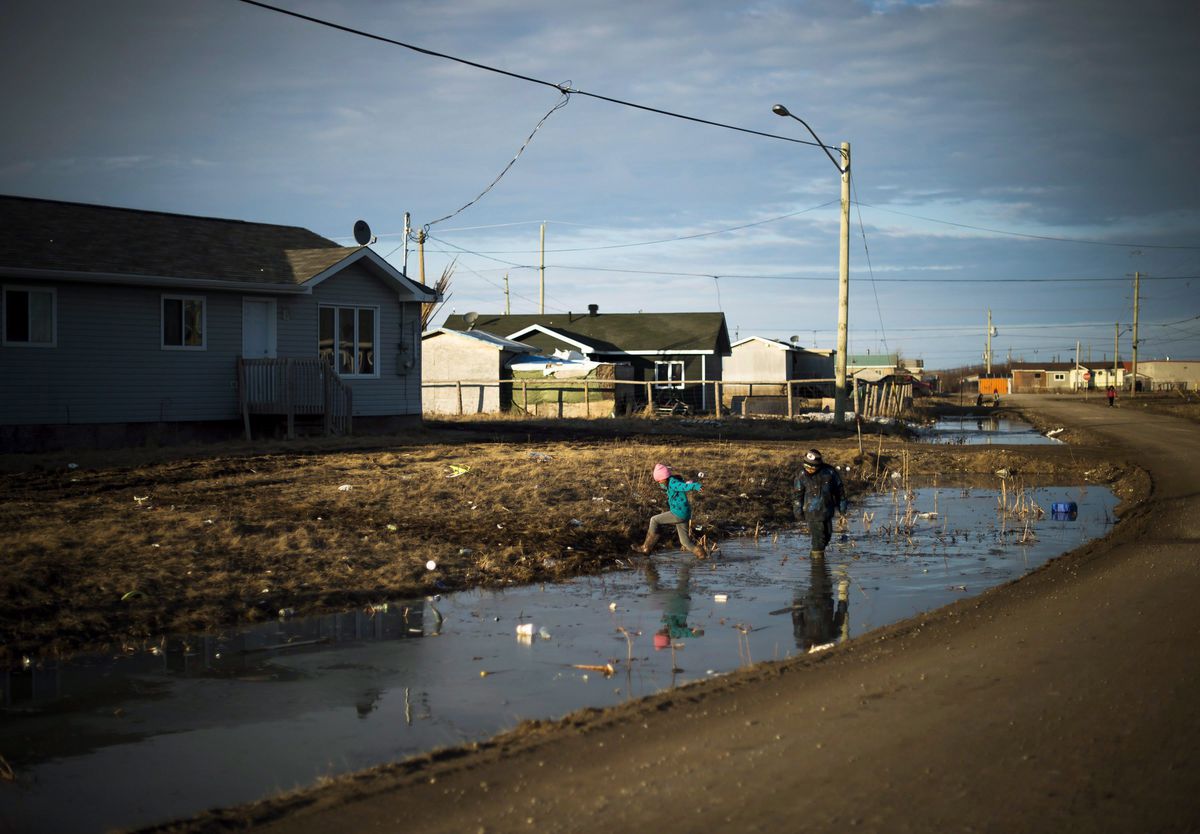September 30 marks a new federal statutory holiday in our country – National Day for Truth & Reconciliation. The day honours the lost children and survivors of residential schools and their families and communities. It recognizes that public commemoration of the tragic and painful history and ongoing impacts of residential schools is a vital component of the reconciliation process.
Today's #reconcilinghistory Children in residential schools died at higher rates than soldiers in WWII. Canada is still creating situations where the deaths of First Nations youth are far more likely as many are forced to leave home at age 12/13 to go to school 100's of kms away https://t.co/rISr0BQ81r
— Cindy Blackstock (@cblackst) September 23, 2021
Fix Our Schools wanted to mark this day with some reflection on First Nations schools across our country.
First Nations Schools on Indigenous Reserves Prior to COVID-19
While Ontario’s publicly funded schools rely upon provincial funding, the federal government is responsible for First Nations schools on reserves. Ontario’s publicly funded school buildings entered the COVID-19 pandemic with a $16.3-billion repair backlog and, despite “historic” levels of provincial funding, this repair backlog increased to $16.8-billion by June, 2021. While this number is staggering, it notably does not even include First Nations schools, portables, accessibility retrofits, water quality, air quality, or asbestos abatement. There is, however, significant disrepair as well as a lack of clean water and sanitation in many schools on First Nations reserves. There is also an absence of schools within a reasonable distance for many First Nations students, particularly high schools.
According to the Assembly of First Nations – First Nations Education Infrastructure Capital Needs Assessment, 2020, there are 526 First Nations schools across Canada, and $2.14 billion is required for new school construction and additions, with 28% (or 140) schools being overcrowded. Further to this, 46 of the 526 First Nations schools required immediate replacement based on the school age or poor condition.
The COVID-19 Pandemic Expanded Inequities In Education and Schools
Disrepair, lack of clean water and sanitation, absence of local schools, and overcrowding were issues that negatively impacted Indigenous students even prior to the COVID-19 pandemic. And, as the Ontario COVID-19 Science Table noted in its July 2021 briefing, “for rural, remote, and Indigenous communities, the COVID-19 pandemic has presented additional distinctive and substantial challenges for education delivery which has expanded inequities”. This science briefing highlighted specific issues with school infrastructure on reserves:
- Ensure clear accountability for education support whether through federal or provincial resources.
- Remote learning is less accessible, due to technological challenges, in these communities.
- Aging infrastructure, including older HVAC and supplemental ventilation/filtration systems in many remote First Nations, Métis, and Inuit communities may impact the ability to properly ventilate schools and ensure adequate air quality, particularly during local outbreaks and in the colder months when opening windows is not an option.
- Schools in remote, rural, and First Nations, Métis, and Inuit communities that do not meet the appropriate minimum ventilation guidelines from ASHRAE Standard 62.1-2019, should be prioritized for upgrades.
- Overcrowded education infrastructure in some remote First Nations, Métis, and Inuit communities could make preventative measures such as cohorting and physical distancing difficult
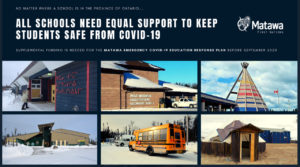 and could result in the need to shift to remote learning in some instances, further contributing to high rates of disengagement. Appropriate resources should be provided to ensure adequate space is available to support consistent in-person learning in these communities, and to ensure equitable access to digital learning resources.
and could result in the need to shift to remote learning in some instances, further contributing to high rates of disengagement. Appropriate resources should be provided to ensure adequate space is available to support consistent in-person learning in these communities, and to ensure equitable access to digital learning resources.
The Truth and Reconciliation Commission of Canada
The Truth and Reconciliation Commission of Canada (TRC) was formed in 2007, in response to the Indian Residential Schools Settlement Agreement, the largest class-action suit in Canadian history. In June 2015, the TRC presented the executive summary of the findings contained in its multi-volume final report, including 94 “calls to action” (or recommendations) to further reconciliation between Canadians and Indigenous Peoples.
The following TRC recommendations are specific to Education:
6. We call upon the Government of Canada to repeal Section 43 of the Criminal Code of Canada.
7. We call upon the federal government to develop with Aboriginal groups a joint strategy to eliminate educational and employment gaps between Aboriginal and non-Aboriginal Canadians.
8. We call upon the federal government to eliminate the discrepancy in federal education funding for First Nations children being educated on reserves and those First Nations children being educated off reserves.
9. We call upon the federal government to prepare and publish annual reports comparing funding for the education of First Nations children on and off reserves, as well as educational and income attainments of Aboriginal peoples in Canada compared with nonAboriginal people.
10. We call on the federal government to draft new Aboriginal education legislation with the full participation and informed consent of Aboriginal peoples. The new legislation would include a commitment to sufficient funding and would incorporate the following principles:
i. Providing sufficient funding to close identified educational achievement gaps within one generation.
ii. Improving education attainment levels and success rates.
iii. Developing culturally appropriate curricula.
iv. Protecting the right to Aboriginal languages, including the teaching of Aboriginal languages as credit courses.
v. Enabling parental and community responsibility, control, and accountability, similar to what parents enjoy in public school systems.
vi. Enabling parents to fully participate in the education of their children. vii. Respecting and honouring Treaty relationships.
11. We call upon the federal government to provide adequate funding to end the backlog of First Nations students seeking a post-secondary education.
12. We call upon the federal, provincial, territorial, and Aboriginal governments to develop culturally appropriate early childhood education programs for Aboriginal families.
September 30 is Canada’s first National Day for Truth & Reconciliation
So much listening, collaboration, funding, and commitment to do better is needed to address Canada’s hitherto abject failure of Indigenous children, their families and communities.
Why all Canadians should observe National #TruthAndReconciliationDay. It is shameful that some provinces are refusing to recognize Sept. 30 as a statutory holiday, by @TanyaTalaga https://t.co/C3CtxBwWRc via @GlobeDebate #Indigenous #reconciliation #EveryChildMatters
— André Picard (@picardonhealth) September 25, 2021
On September 30, we encourage you to mark Canada’s first National Day for Truth & Reconciliation. Consider taking time to:
- Wear orange. Orange Shirt Day, an Indigenous-led grassroots commemorative day that honours the children who survived Indian Residential Schools and remembers those who did not, also takes place on September 30. Wearing orange on September 30 raises awareness of the very tragic legacy of residential schools, and honours the thousands of Survivors.
- Write your newly elected (or re-elected) local MP and Prime Minister Trudeau to prioritize education and schools for all Indigenous Peoples in Ontario, and across the country.
- Tune in to CBC coverage of National Day for Truth and Reconciliation. CBC will be sharing First Nations, Métis and Inuit perspectives and experiences from across the country. For the entire day, these stories will be broadcast across CBC TV, CBC News Network, CBC.ca, CBC Kids, CBC Radio One and CBC Music, including a commercial-free primetime broadcast special, National Day for Truth and Reconciliation.
- “See us, hear us, and to believe us”. Geraldine Shingoose, a residential school survivor – or warrior as she prefers to be called – said in this Global News piece , “I ask Canada to see us, to hear us and to believe us,” echoing the sentiments of Murray Sinclair, who served as chairman of the Truth and Reconciliation Commission. Shingoose suggests Canadians take a moment of silence at 2:15 p.m. – referring to the number of graves found in Kamloops, and adds that small gestures such as displaying an orange shirt in your window can have a powerful impact on survivors.
Largest School Board in the Country Takes a Step in the Right Direction
The Toronto District School Board (TDSB) is Canada’s largest school board and, as per the following media release from September 22, 2021, has taken a step in the right direction.
A new Indigenous Education Centre from the @tdsb — Boyne Natural Science School. Programming focuses on "holistic Indigenous health and well-being (physical, intellectual, emotional, spiritual) in support of Indigenous student success". https://t.co/vE0vXWEWZS
— Fix Our Schools (@Fix_Our_Schools) September 26, 2021
“The Toronto District School Board (TDSB) Urban Indigenous Education Centre (UIEC), with guidance from the Elders Council, will open the Boyne Natural Science School as an Indigenous Land-Based Learning site.Trustees unanimously supported the initiative during this evening’s Regular Board Meeting.
This site is located on 308.5 acres of the Niagara Escarpment, adjacent to the Bruce Trail and the Boyne River Provincial Park. Its reopening supports the Truth and Reconciliation Commission of Canada: Calls to Action and supports Indigenous Education on The Land for all students, staff and Indigenous communities
The Indigenous Land-Based Learning site, which will have one to two classes on location at a time will feature programming that focuses on holistic Indigenous health and well-being (physical, intellectual, emotional, spiritual) in support of Indigenous student success. It will also include professional learning, community engagement, partnerships, curriculum resource development and innovation, research and development, and reconciliation through Indigenous perspectives.
To support the expansion of Land-Based Learning through Indigenous ways of knowing and being, UIEC staff will create resources to support all curriculum areas based on Indigenous Pedagogies; including, but not limited to Indigenous cultures and traditions, Indigenous language revitalization, archery, canoe/kayak building, hiking, maple syrup programming, mapping and orienteering, medicine harvesting and walks, mountain biking and snow shoeing.
In the future, the TDSB anticipates the site can be restored to support larger groups for day and overnight programming when the pandemic allows.”


